5. The War of the Gargantuas (1966)
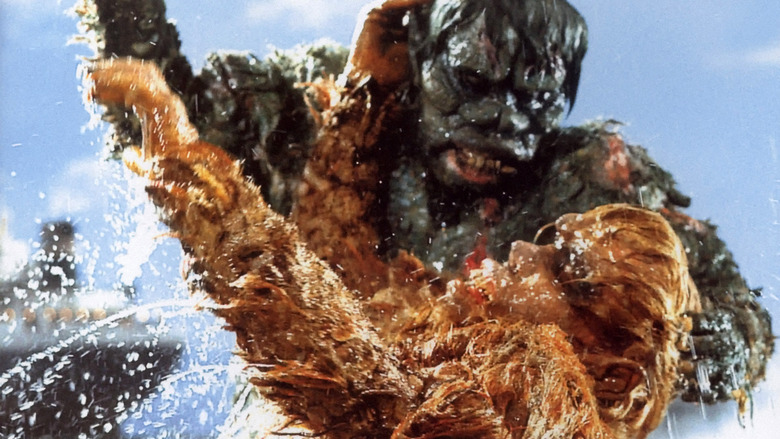
This classic 60s kaiju picture is a straight up monster action movie! It’s actually a sequel to the 1965 movie “Frankenstein Conquers the World,” but all connections in Gargantua’s predecessor in the english dubbing are cut. “The War of the Gargantuas” is a Japan-set showdown between the lab-experiment creature Gargantua and the evil Gargantua. Two scientists (played by Russ Tamblyn and Kumi Mizuno) give advice when havoc is rife.
Everyone knows Tarantino steals from every movie ever made, and he stole from this one too, explaining on the making of “Kill Bill Vol. 2” DVD extra that the fight between Elle Driver and the Bride was inspired by the Gargantuas.
This movie also has several other delightful coincidences: this was the first movie ever watched by Brad Pitt, as well as Nicholas Cage’s favorite movie. Russ Tamblyn (known for starring in West Side Story and would go on to play Dr. Jacoby in “Twin Peaks”) played the American scientist in this movie. He supposedly hated being on set and didn’t follow any instructions from the crew, and ended up making up his own dialogue instead of sticking to the script, which he thought to be terrible. Oh, Russ, why did you have to make such a fuss?
4. Mad Love (1935)
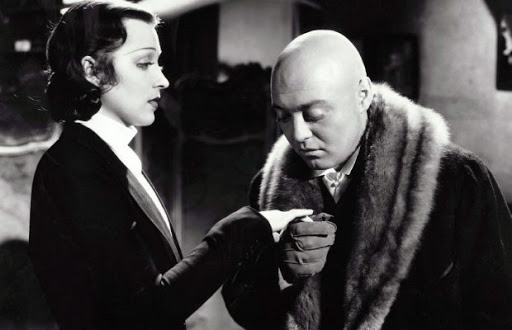
“Mad Love,” or “The Hands of Orlac” is a curious horror picture starring Peter Lorre in one of his best performances. “Mad Love” is all about demented fanboy Dr. Gogol’s (Peter Lorre) love obsession with theatre actress Yvonne Orlac. Unfortunately, she’s actually married to a pianist named Stephen. Instead of shooting the piano player, Dr. Gogol replaces Stephen’s broken hands (a result of a train wreck) with those of a knife wielding murderer.
Even though this picture has a wacky premise, this viewer found it surprisingly dramatic and tense. You feel for each of the characters and understand their motivations. By the end, you might even find yourself tearing up a little.
With terrific performances, perfect direction from director/cinematographer Karl Freund, and a snappy script, you’ll fall madly in love with “Mad Love.”
3. The Skin I Live In (2011)
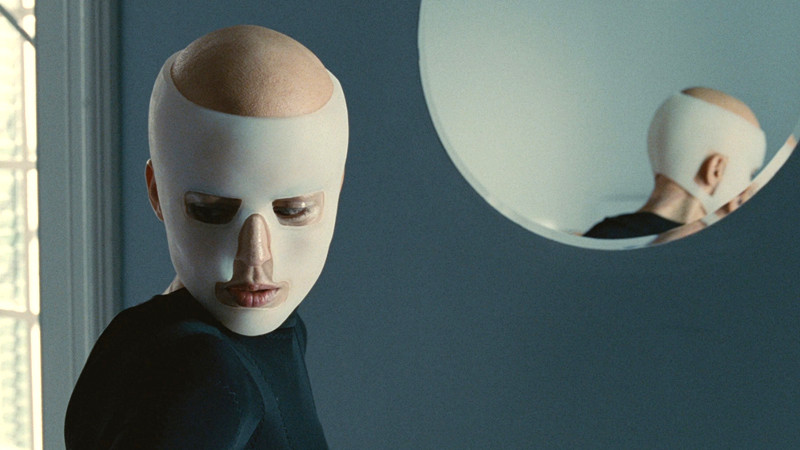
A 21st century “Eyes Without a Face,” “The Skin I Live In” is a mix of melodrama, thriller and body horror that allows viewers to live through the eyes of plastic surgeon Robert Ledgard (Antonio Banderas), a tortured soul whose wife was badly burned in an automobile accident. Ever since, he’s been meticulously trying to invent a new type of skin able to exercise the sensations of real flesh. He and his loyal housekeeper hold the beautiful Vera captive as she serves as a guinea pig for his experiments.
Masterfully directed by Pedro Almodovar, “The Skin I Live In” captures (without any cheap shocks or jumpscares), an uneasy horror lingering long after the credits have rolled. The film is full of show stopping performances, especially from Elena Anaya as Vera.
“The Skin I Live In” is a beautiful horror movie, at times squirm inducing, but still beautiful nonetheless. Excellent choice Tarantino.
2. Santa Sangre (1989)
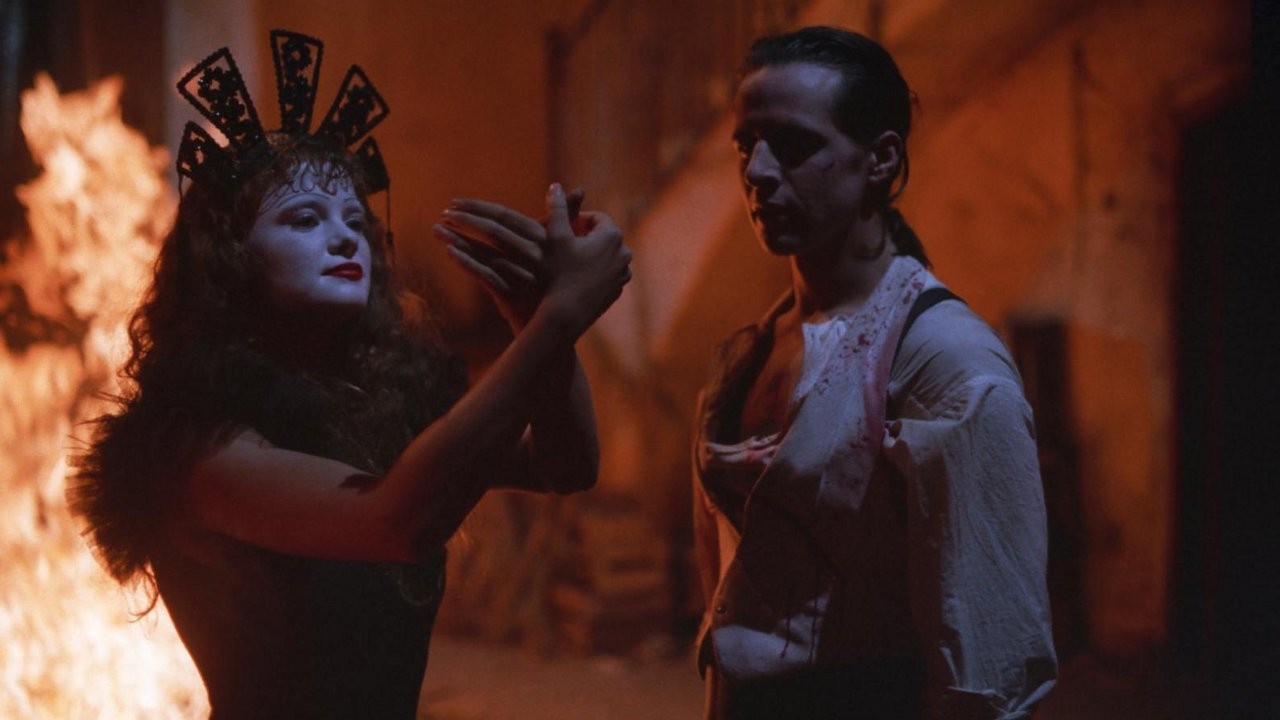
Tarantino stole a shot from this movie and stuck it in where Butch is kataning to death our favorite hillbilly friends from “Pulp Fiction!” “Santa Sangre” is Alejandro Jodorowsky’s overshadowed masterpiece, a collaboration of story with Claudio Argento and Roberto Leoni.
“Santa Sangre” may not be Jodorowsky’s most epic, but it’s certainly his most terrifying, and maybe even his most complete. It’s not really a horror movie and is arguably outside all genre boundaries, but still contains outstanding horror elements. This exhilarating blend of Hitchcock, Marceau, Bunuel, and classic giallo, along with Jodorwosky’s signature touch, tells the tale of Fenix, a circus boy traumatized by the injuries of his mother and the death of his father who is put into a mental asylum as an adult.
As a child, Fenix’s knife-throwing father cuts off his mother’s arms in a drunken rage. We watch as Fenix escapes the asylum to perform with his armless mother, serving her as her hands and arms. What follows is a heartfelt story of redemption, love, and trauma, as Felix tries not to become the monsters his parents were.
The movie bridges the gap between Jodo’s early works and his later psychomagic outings (“The Dance of Reality,” “Endless Poetry”) to heal his soul. With masterful performances, unbelievable choreography, excellent visuals, “Santa Sangre” has the power to heal any soul.
1. Wicked, Wicked (1973)
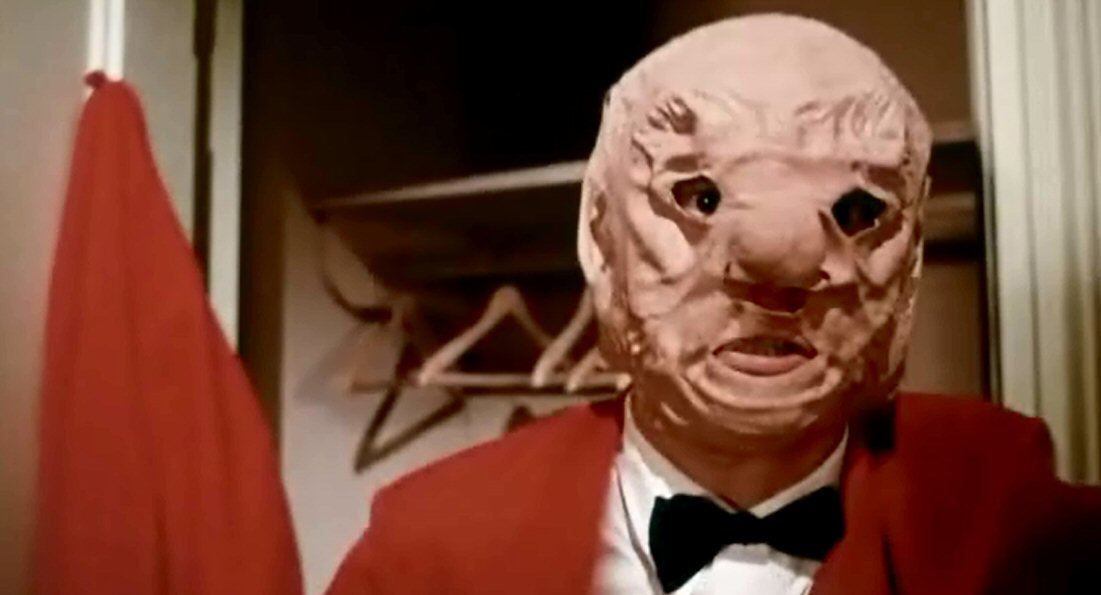
Murders are happening in a California seaside hotel. This murderer has a penchant for blondes and wears a crappy monster mask while he commits his dastardly deeds. His name is Jason, and he’s a handyman at the Hotel del Coronado. (A famous movie hotel that starred in the likes of “Some Like it Hot” and “The Stuntman”.)
We watch as self-styled detective Rick Stewart (David Bailey) attempts to solve the madness as he runs into his ex-wife, Lisa, now a lounge singer for the hotel. Luckily, Lisa’s a brunette, so she probably isn’t going to be a target for this film’s serial killer anytime soon- until one night, when she dons a blonde wig for a performance, and boy, oh boy, is our Jason excited when he sees those golden curls a bouncin’ on Lisa’s head!
“Wicked, Wicked” was one of the first movies (after Warhol’s Chelsea Girls, and several other arthouse joints) to try to make “duo-vision” popular (where the film is split screen, in this case throughout the entire duration), hyping this up a lot in its marketing. “Wicked, Wicked’s” duo-vision is not only a gimmick and tests the split-screen technique up to the max, perhaps even more than Brian De Palma’s “Sisters” released the same year. What “Wicked, Wicked” lacks in story is made up for by amazing, comic-book-like shots that are flashbacks, reverse shots, and POVs of victims. It’s as advertised on “Wicked, Wicked’s” poster, “See the hunter, see the hunted, both at the same time!”
“Wicked, Wicked” also boasts fantastic talent from the lovely Tiffany Bolling, as well as a fun debut performance from Vietnam veteran Randolph Roberts, and astounding filmmaking from director Richard L. Bare, a veteran tv director who was involved in some of the best Twilight Zone episodes. L. Bare was extremely ahead of his time, not only by crafting an entire film in split-screen, but also wanting to essentially create a cinematic universe around “Wicked, Wicked,” planning a sequel named “Evil, Evil,” and a spin-off Television series revolving around Rick Stewart.
Unfortunately, Bare’s ambition has never manifested onto America’s screens. Critics were confused by the surreal mix of thriller, slasher, drama, comedy, mystery, metaness, and high camp. “Wicked, Wicked” was like the little engine that could. But, alas, the critics of the 70s dumped all over this clever little gem, condemning it to the cracks of obscurity. Tiffany Bolling even defecated a bit on the film a bit herself, slashing it out of her resume, saying, “They can’t do anything with it. They can’t put it on home video, because you can’t see it on TV, the screen is so small, so it just totally was a bust.”
“Wicked, Wicked’s” financial and critical failure resulted in Bare’s future filmography being, well… bare. He would only direct one more television episode. Then he hung up his hat and said goodbye to cinema, never working with another slice of film the rest of his entire life. (I suppose he could’ve made the occasional digital piece for some home videos with his children and grandchildren. One can dream.) It seemed all hope was lost, and his brainchild of a zany horror movie would never ever be recognized.
But a miracle occured. In 2008, “Wicked, Wicked” began to show on the TCM underground, being featured quite often. Then on October 28th, 2014, the film came out on a DVD-R through the Warner Archive, going through an elaborate 2 year restoration.
Maybe somewhere, once upon a time in an alternate universe, there is an “Evil, Evil.” And maybe, just maybe, there’s a “Bad, Bad” too. And a “Vile, Vile.” A “Nefarious, Nefarious.” “Atrocious, Atrocious.” And maybe Bare’s cinematic universe could’ve concluded with a smashing magnum opus called “Good, Good.” But for now, Bare’s dreams must always live on within us. As we gather ‘round and watch “Wicked, Wicked,” a film that’s wickedly good and works. Anytime, anywhere. Anytime, anywhere.